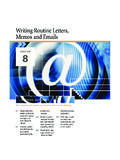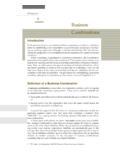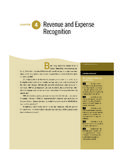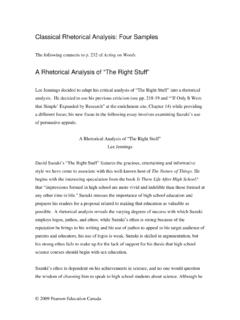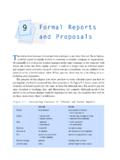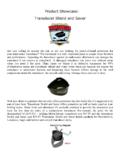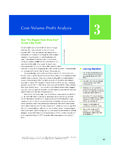Transcription of CHAPTER Primate Origin - Pearson | The world's …
1 CHAPTER Primate Origin GOALS By the end of this CHAPTER you should understand: 1. Basic morphological features used to describe and classify fossil primates. 2. How morphological features are used to infer diet and locomotion in fossil primates. 3. Theories on Primate origins. 4. General patterns of morphology and phylogenetics for fossil primates from 65 to million years ago. CHAPTER OUTLINE Introduction to Fossil Primates Paleocene Primates Eocene Primates: Are We There Yet? Oligocene Primates: Hey, Is It the Monkeys?
2 Miocene Primates: Planet of the Apes Pliocene Primates: Return of the Mon-keys! 5 Introduction As an undergraduate, I was fortunate to have the opportunity to attend the annual meeting of the American Association of Physical Anthropologists. Many of the world authorities on Primate origins happened to attend these meetings. As I trailed behind my academic advisor from one fascinating presentation to another, I was amazed by the enthusiasm for science exhibited by senior profes-sors I considered to be required reading: They loved their jobs!
3 One night I joined a throng of bois-terous professors and students in the hotel lounge. Amidst the crush of bodies, I was introduced to a famous paleoanthropologist, who was carrying a mysterious large case. My advisor, who knew the old paleoanthropologist well, suggested I be shown the new toy from Africa. With a sparkle of humour in his eye, the old paleoanthropologist reached into his cavernous case and gently placed this toy in the palm of my hand. It was no toy! There, nestled ever so precariously, was the fossil-ized skull from a Primate that was almost 33 million years old!
4 Not only was the fossil incredibly old, it also represented a newly discovered species! Despite my nervousness at holding such a rare thing, I was fascinated by thoughts of what the creature was like when alive: what did it think about, how did it behave, did it have a mate and offspring, was it intelligent, and why did it die? I suddenly realized the sheer joy and wonder that comes from discovering a fossil Primate . In this CHAPTER , we discuss the evolutionary anthropology of non-human primates in the fossil record.
5 In the sections below, we undertake a broad review of Primate origins from the time of the dinosaurs up until the emergence of the first hominins. Each section starts with a review of the major global patterns of geography and climate. This information is needed to understand how environmental factors influenced Primate macroevolution. We then undertake only a brief review of the major morphological characteristics and ecological interpretations of the primates associated with that epoch. Finally, we piece together the phylogenetic relationships of early primates.
6 Introduction to Fossil Primates Diphyodonty Having two successive sets of teeth. Maxilla Part of the upper jaw from which the teeth grow. Mandible Lower The part of the tooth that is visible above the gum. Neck Part of the tooth that is within the gum line. Root Part of the tooth that is below the gum line. Enamel Outer sur-face of a tooth, the hardest biological substance in the Pointed or rounded part of the biting surface of a tooth. Fossil primates represent a factual record of evolutionary patterns and processes over the last 65 to 80 million years.
7 Despite the incomplete nature of these fossils, fascinat-ing things have been learned from studies of their dental and skeletal features. We have gained invaluable insights into the diet and behaviour of fossil primates by com-paring their dentition and skeletal features with those of extant primates. Therefore, we first need to cover basics of Primate dentition and skeletal morphology. Macroevo-lutionary studies of the Primate fossil record reveal intriguing evidence of intermedi-ate forms that link extinct and extant taxa.
8 Put differently, we find evidence for so-called missing links between some Primate taxa. Thus, the fossil record provides us with information on ebbs and flows of Primate diversity over tens of millions of years. Based on this information, researchers have formulated theories on how and why the first primates evolved. Finally, we review the hypothesized phylogenetic relationships of fossil primates within specific time periods. So let s learn about teeth! Basics of Primate Dentition Understanding basic Primate dentition is important for two reasons.
9 First, because of their extreme hardness, teeth are the most common fossilized remains found by pa-leoanthropologists. Second, dental morphology provides information on the diet of fossil primates. Our review focuses on dental development, tooth structure, and the kind and numbers of teeth found in primates. All primates have diphyodonty, mean-ing they have two sets of teeth. The first set of teeth, often termed baby or decidu-ous teeth, appear early in infant development, and then are replaced by a full set of adult teeth.
10 Teeth are found in the maxilla, the part of the upper jaw from which the teeth grow, and the mandible, the lower jaw. Each tooth can be divided into the fol-lowing three parts: crown, neck, and root (Figure ). The tooth crown is covered by a hard substance called enamel, and has varying numbers and kinds of cusps the pointed or rounded biting surface of the tooth. The crown is supported by dentin, which is softer than enamel. The pulp cavity underlies dentin, and forms the central chamber of the tooth.
